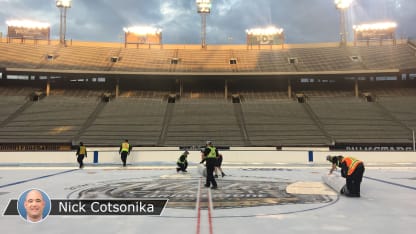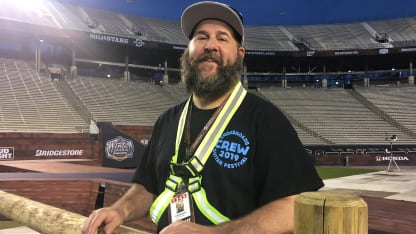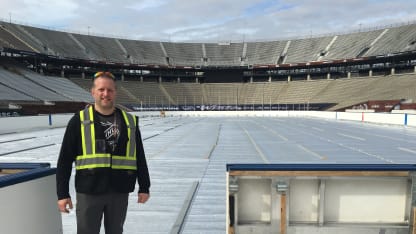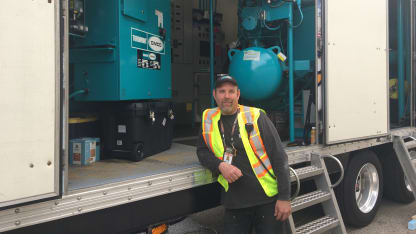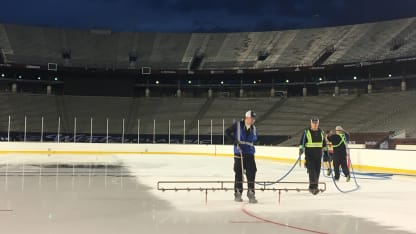Cody Bateman, member of the ice crew
Others work outside the NHL, including Fletcher, who is at his 21st outdoor game. He is the facility supervisor for the City of West Kelowna, British Columbia, and has a wife and two kids, ages 18 and 21. But he took vacation time and spent Christmas away from his family to be here.
"The game is the end product, but the guys are the reason I come back every year, because they're a second family," Fletcher said. "We get together and have a great time for three weeks, and it's for the love of the game and the love of each other."
* * * * *
The NHL has held outdoor games in all kinds of cities, stadiums and conditions over the years, from Los Angeles to Ottawa, on baseball and football fields, from 0 to 65 degrees Fahrenheit, through sun and snow, in wind and rain, in daylight and at night.
"We've seen it all, I think," Fletcher said. "Some places, we've seen it all in the same day."
The goal is always the same.
"You want it to be as close as possible to an indoor sheet," said NHL senior manager of facility operations Derek King, the leader of the crew. "We know we can't control air temp, humidity. But what we can control, we pay really close attention to."
